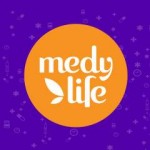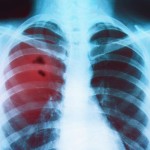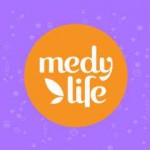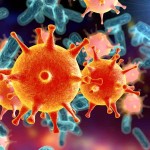Anemia
The condition of having a lower-than-normal number of red blood cells or quantity of hemoglobin.
Normal results vary, but in general are:
• Male: 13.8 to 17.2 gm/dL
• Female: 12.1 to 15.1 gm/dL
• (Note: gm/dL = grams per deciliter)
Anemia has three main causes: blood loss, lack of red blood cell production, and high rates of red blood cell destruction.
Conditions that may lead to anemia include
• Heavy periods
• Pregnancy
• Ulcers
• Colon polyps or colon cancer
• Inherited disorders
• A diet that does not have enough iron, folic acid or vitamin B12
• Blood disorders such as sickle cell anemia and thalassemia, or cancer
• Aplastic anemia, a condition that can be inherited or acquired
Anemia can make you feel tired, cold, dizzy, and irritable. You may be short of breath or have a headache.
Symptoms
The most common symptom of anemia is fatigue or weakness.
Other signs and symptoms of anemia include:
• Shortness of breath
• Dizziness
• Headache
• Coldness in the hands and feet
• Pale skin
• Chest pain
Causes
Three main cause of anemia are:
1) Blood loss
2) Lack of red cell production
3) High rates of red blood cell destruction
1) Blood loss: Blood loss is the most common cause of anemia, especially in iron-deficiency anemia. Blood loss can be short term or long term depending upon the conditions.
Bleeding in the digestive or urinary tract can cause blood loss. Surgery, trauma, or cancer also can cause blood loss. Heavy blood loss due to menstruation.
If a lot of blood is lost, the body may lose enough red blood cells to cause anemia.
2) Lack of Red Blood cell production:
It can be due to "acquired" or "Inherited".
["Acquired" means that the person is not born with the condition, but may develop it at later stages.
"Inherited" means that the condition has been passed by the parents.]
Acquired conditions and factors that can lead to anemia include:
Poor diet
Unusual hormonal levels
Chronic diseases
Pregnancy
Aplastic anemia can also prevent body from making enough red blood cells. This condition can be both acquired or inherited.
3) High rates of RBCs destruction:
Factors that can cause destruction of red blood cells.
One condition can be an enlarged or diseased spleen.This is an acquired condition.
Inherited conditions are the one when body destroy too many red blood cells. It can be in sickle cell anemia, thalassemias, and lack of certain enzymes. These conditions create defects in the red blood cells that cause them to die faster than healthy red blood cells.
Hemolytic anemia is another example of a condition in which body destroys its red blood cells. Both inherited or acquired conditions or other factors can cause hemolytic anemia. Examples include immune disorders, infections, certain medicines, or reactions to blood transfusions.
Diagnosis
• Medical History:
• Signs and symptoms like weakness, malaise or body aches
• Blood tests:
• To check for the levels of hemoglobin (it is a protein that transports oxygen)
• Red blood cells (cells that contain hemoglobin)is lower than normal.
• Physical examination:
• Rapid or irregular heartbeat
• Rapid or irregular breathing
• Enlarged liver or spleen
• Complete blood count (CBC): A CBC is generally done to know the number of blood cells in the blood. To check anemia, physician will see the levels of the red blood cells contained in the blood (hematocrit) and the hemoglobin in blood. Normal adult hematocrit values vary from one medical practice to another but are generally between 38.8 and 50 percent for men and 34.9 and 44.5 percent for women.
• A test to determine the size and shape of your red blood cellsSome of red blood cells may also be examined for unusual size, shape and color. This will help in diagnosis. For example, in iron deficiency anemia, red blood cells are smaller and paler in color than normal. In vitamin deficiency anemia's, red blood cells are enlarged and fewer in number.
Treatments
Iron supplements: The most commonly prescribed supplement is ferrous sulphate, taken orally (by mouth) two or three times a day.
Dietary supplements: Iron-rich foods include:
• Dark-green leafy vegetables, such as spinach
• Iron-fortified cereals
• Whole grains, such as brown rice
• Beans
• Nuts
• Meat
• Apricots
Complications
Iron deficiency anemia rarely causes any serious or long-term complications. However, some of the complications are listed below:
Tiredness
Iron deficiency anemia can leave a person tired and lethargic (lacking in energy), as a result person may be less productive and active at work.
Immune system
Iron deficiency anemia can affect immune system (the body’s natural defence system), making a person more susceptible to illness and infection.
Heart and lung complications
Adults with severe anemia may be at risk of developing complications that affect their heart or lungs. For example,
• Tachycardia (an abnormally fast heartbeat)
• Heart failure, when your heart is not pumping blood around your body very efficiently
Pregnancy
Pregnant women with severe anemia have an increased risk of developing complications, particularly during and after the birth. They may also develop postnatal depression (a type of depression some women experience after having a baby).
References:
CDC
NHS
WHO
National Heart,Lung and Blood Institute







